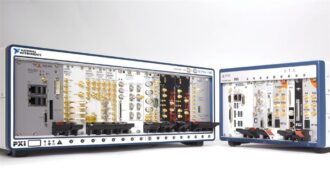Description
The National Instruments PCI-6541 Digital Waveform Device is an advanced waveform generator/analyzer that operates at maximum frequencies of either 100 MHz or 50 MHz. It features 32 channels with per-channel direction control and is designed to handle deep onboard memory with triggering and pattern sequencing. Compatible with a variety of logic levels including 5.0, 3.3, 2.5, and 1.8 V, this versatile device utilizes the NI-HSDIO driver.
Software compatibility extends to the NI Digital Waveform Editor, NI LabVIEW, LabVIEW SignalExpress, and C, providing users with a comprehensive suite of tools for importing test patterns, as well as graphical and interactive waveform editing. Additional features include the ability to work with PRBS and count up/down examples, enhancing its application scope. The device boasts a minimum data delay at or above 25 MHz and offers a data delay resolution of 0.4% of the clock period, ensuring precise timing for complex tasks.
With part numbers 778988-01, 778988-02, 778988-03, and 191431A-01, users have multiple options for integration and usage. This device is a powerful solution for engineers and professionals who require a high-performance digital waveform generator/analyzer for their sophisticated electronic testing and analysis needs.
| Feature | Specification |
|---|---|
| Manufacturer | National Instruments |
| Product Name | PCI-6541 Digital Waveform Device |
| Part Numbers | 778988-01, 778988-02, 778988-03, 191431A-01 |
| Maximum Frequency | 100 MHz or 50 MHz |
| Functionality | Waveform Generator/Analyzer |
| Number of Channels | 32 |
| Per-channel Direction Control | Yes |
| Onboard Memory | Deep with triggering and pattern sequencing |
| Supported Logic Levels | 5.0, 3.3, 2.5, 1.8 V |
| Driver | NI-HSDIO |
| Software Compatibility | NI Digital Waveform Editor, NI LabVIEW, LabVIEW SignalExpress, C |
| Additional Features | Importing test patterns, graphical and interactive waveform editing, PRBS and count up/down examples |
| Minimum Data Delay | At or above 25 MHz |
| Data Delay Resolution | 0.4% of the clock period |




